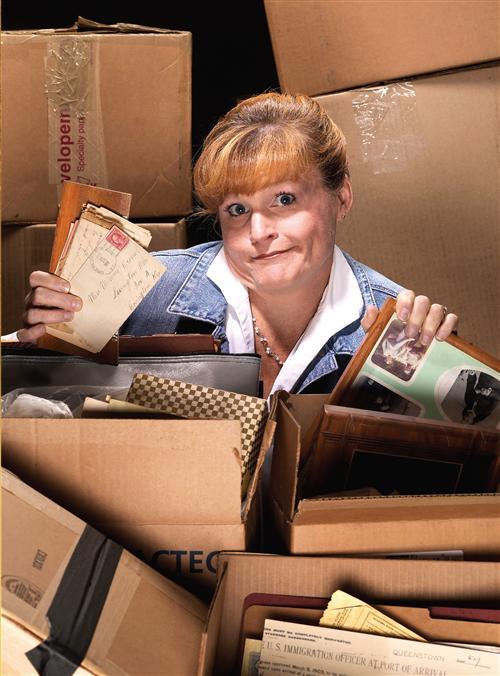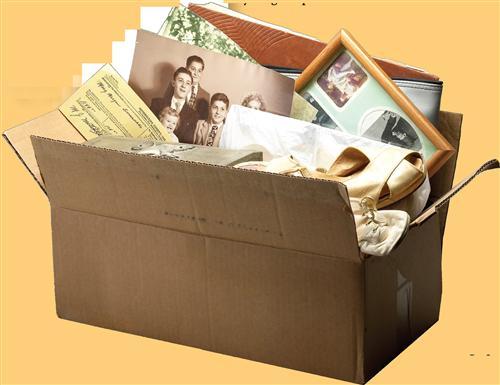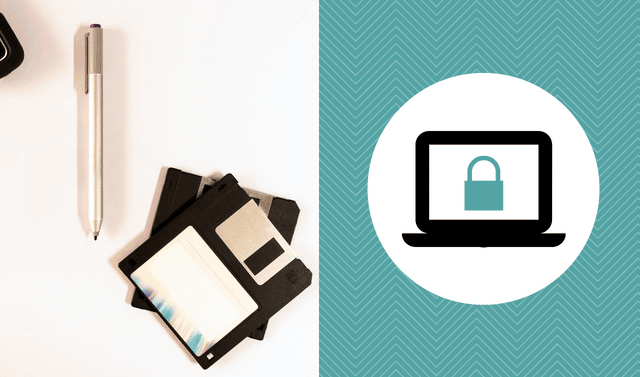Sign up for the Family Tree Newsletter Plus, you’ll receive our 10 Essential Genealogy Research Forms PDF as a special thank you!
Get Your Free Genealogy Forms
"*" indicates required fields

If you’re the designated family historian, you’re probably thrilled to have this treasure trove — but overwhelmed by the job of organizing and preserving it. Or perhaps you haven’t a clue about this genealogy stuff and don’t know where to begin. Whatever your situation, we’ve got practical tips to help you decide what to keep, what to donate and what to preserve for posterity.
Take stock of your stash
You’ve already taken a step in the right direction by recognizing that what you have could be valuable. “It’s really important for average folks, who sometimes devalue their own history, to recognize their stories are important, and to preserve the records of their lives and families,” says Peter Wosh, director of New York University’s archival management program.
Those boxes you’ve inherited likely contain a mixed bag of genealogical documents such as birth certificates and immigration papers; personal mementos including photos, letters, diaries and greeting cards; and paperwork — receipts, bank statements and utility bills. Still other papers might relate to a family business or relatives’ church groups, social clubs, political parties and other organizations. Where do you begin when you’re looking at a pile of boxes and no idea what’s in them, or how important it is?
The first step, says Deborah Evans, director of the Church of Jesus Christ of Latter-day Saints’ Family History Center in Camden, SC, is to carefully look at every piece of paper. She recommends asking an older relative to go through the materials with you if possible. He or she may be able to share stories behind some of the documents and pictures; recognize and decipher an illegible name, date or place; and provide missing information, such as names of people you don’t recognize, or the back story on someone mentioned in a letter.
It’s easiest to glean genealogical facts as you go. They may be immediately evident in marriage licenses and death certificates, but you’ll have to dig deeper to find them in other papers. Though your immigrant ancestors’ letters to family members back home and your great-grandmother’s secret diary may seem like pure entertainment, they’re likely packed with important details about your family. That’s why it’s a good idea to photocopy them so you can take notes and highlight names, places and other relevant facts without damaging the originals. Save time later by keeping family group sheets handy and filling them in as you read through the materials. These forms (free at <www.familytreemagazine.com/freeforms>), which have spaces for name, birth date and place, spouse, children and other details, help you keep track of each family.
Let the sorting begin
Whether you go it alone or with a relative, follow these guidelines to sort the stuff into piles to toss, donate and keep (add a “not sure” pile for anything that warrants a closer look when you have more time):
Toss: Unless you have unlimited closet space, the first step is to consider discarding (or selling on eBay <ebay.com>) papers that clearly have no genealogical or historical value: a heap of department store circulars, boxes of unidentifiable receipts and manuals for long-retired kitchen appliances. But be reluctant to put anything into the shredder immediately. At first glance, your grandparents’ stack of electric bills may seem like worthless junk, but an expert eye might see significant value. For example, if those bills are from a time when electricity was introduced to the area, they may have some historic importance. “I always advise people to let [trained professionals] advise on what to keep, so they don’t dispose of something of value,” says Henry Fulmer, curator of manuscripts at the University of South Carolina’s South Caroliniana Library <www.sc.edu/library/socar>. One source for finding and hiring such professionals is the Society of American Archivists <www.archivists.org>.
Donate: As you peruse the papers, you’re bound to come across valuable items you don’t have space for. But your mom’s old high school yearbooks, the files from your grandfather’s business or the minutes from your grandmother’s church group meetings might be of interest to other researchers, so consider donating the materials to a repository such as your local library or state historical society. Before giving anything away, Evans advises, copy or scan and save to CD any portions of the trove bearing information related to your family (for example, the yearbook page with Mom’s photo).
Keep: Organizing this pile might be your biggest job. Of course, you’ll want to set aside documents such as wills, stock certificates and insurance papers you may need for legal reasons. Here are some sorting suggestions for everything else:
• Family group: You can put the materials relating to each family in a pile along with the corresponding group sheet you created. Then file the group sheets alphabetically in an accordion folder and keep it someplace you can easily access. As you discover more information, add it to the sheets.
• Subject: Arranging materials by subject, such as your great-grandfather’s military service or the textile business your family ran for three generations, is another option. Keep a separate box for each subject so you can easily review and add new materials as you find them.
• Time period or life cycle: To break up a large collection of papers relating to a single person, sort them by time period, such as childhood, college, marriage and retirement. File each period chronologically in a separate accordion folder.
Find a good home
Can’t keep everything you’ve inherited? Don’t send your family archive to the trash heap just yet. First, consider whether a relative might want to be the papers’ custodian. Who knows, your third cousin twice removed with the newfound genealogy passion (and large suburban home) might be more than happy to store everything.
If you don’t have such a cousin, a historical society or library might want your stuff. Such repositories specialize in preserving historical manuscript collections for researchers. Materials of interest include letters, diaries, legal documents, scrapbooks, photographs, video- and audiotapes, business records, speeches, professional papers and organizations’ reports or meeting minutes. Some repositories also collect art, artifacts, books and music.
Just don’t expect them to take anything and everything. “It’s a real challenge to find repositories that are willing to take on family materials that may not have any historical significance,” says Steven Siegel, archivist at the 92nd Street Y <www.92y.org>, a Jewish cultural and social organization in New York City. It’s not that your family history doesn’t matter, but the cost of storing and maintaining collections means repositories have to be choosy about what they’ll accept. In fact, many focus their collections on materials associated with a certain religion, ethnicity or geographical area. Search the Web for potential takers, or check with a local historical society.
Once you have some candidates, find out whether each institution has the resources to properly care for your materials. What will the repository do with your material — file it away, display it or make it available to researchers? Will you have access to your papers, or do you give up those rights when you donate? Then contact the repository to learn what it accepts and how to donate. Find more donation information at <www.archivists.org>.
Preserve your memories
To increase the longevity of original documents and photographs, store them in an acid-free, lignin-free envelopes or folders (use a sheet of buffer paper to separate items in a folder), then place them in an archival box. Treat acidic papers — for example, newspaper clippings — with a deacidification spray such as Archival Mist <www.eksuccess.com>. Though archival folders cost a little more than regular ones, your investment ensures your family archive will last as long as possible.
Avoid keeping photographs in “magnetic” albums — the ones with adhesive pages and plastic overlays. If these are among your lot, photos may be falling out or permanently stuck in. In the latter case, first scan the pages to preserve the images. Then remove the photographs, which can be difficult to do without damaging them, says photo historian and Family Tree Magazine contributing editor Maureen A. Taylor. To free them, Taylor recommends sliding fine dental floss (try Glide) under the photos and gently pulling. If that doesn’t work, pop the album into the freezer for a short time; when the glue has hardened, try to gently lift out the photos. If all else fails, you can use Un-Du glue solvent on 20th-century photos, but be careful not to get it on the fronts of the images. Take the album to a conservator if the stuck-in photos are older. Lightly write details on the back of each image with a soft pencil. Use photo corners (not adhesive) to mount photos in an archival-quality album, then add captions.
Once everything’s in archival containers, don’t even think of putting them in the attic or the basement, where temperature and humidity fluctuations could damage your precious memories. Instead, choose a stable environment (70 degrees with 50 percent humidity is optimal), such as a bedroom or hall closet that’s easily accessible but out of the way.
Now that you’ve conquered that mountain of papers and mementos, it’s easier to see the positives of being guardian of your family’s archive. Not only are all those genealogical clues neatly stashed right in your own office — you also can use your family room again.
ADVERTISEMENT





